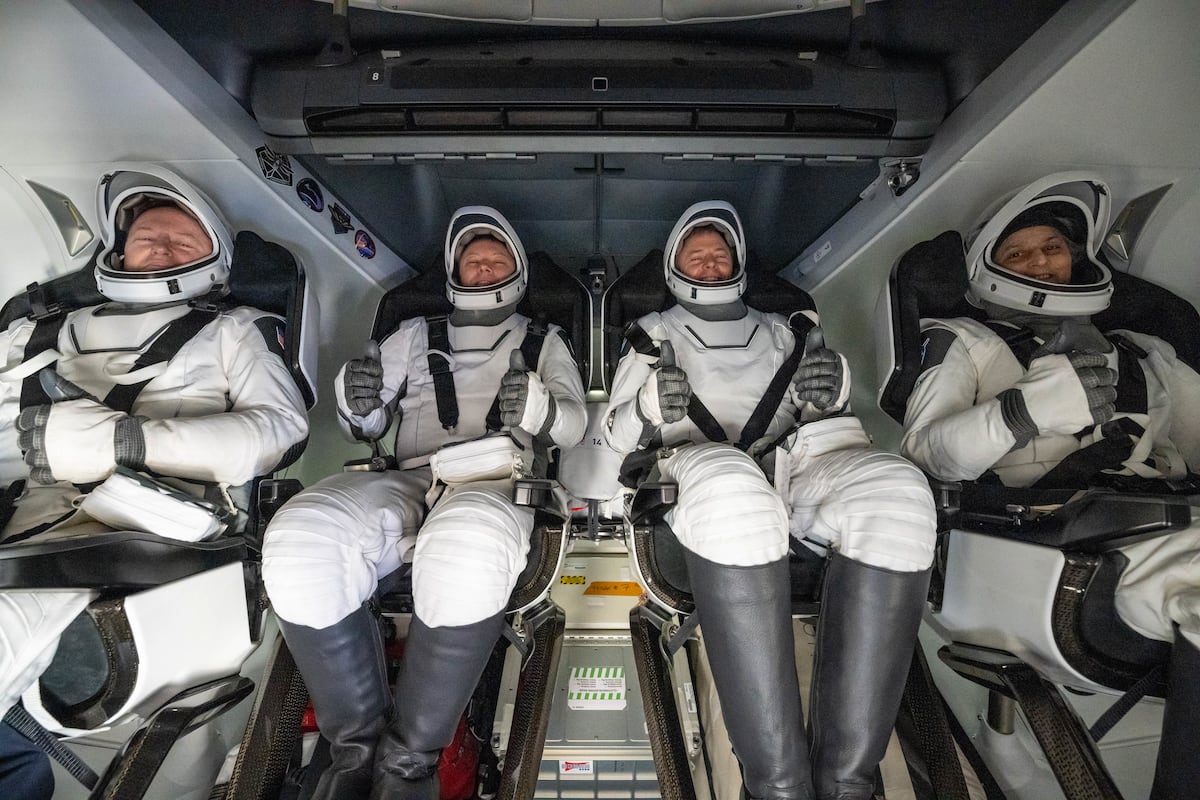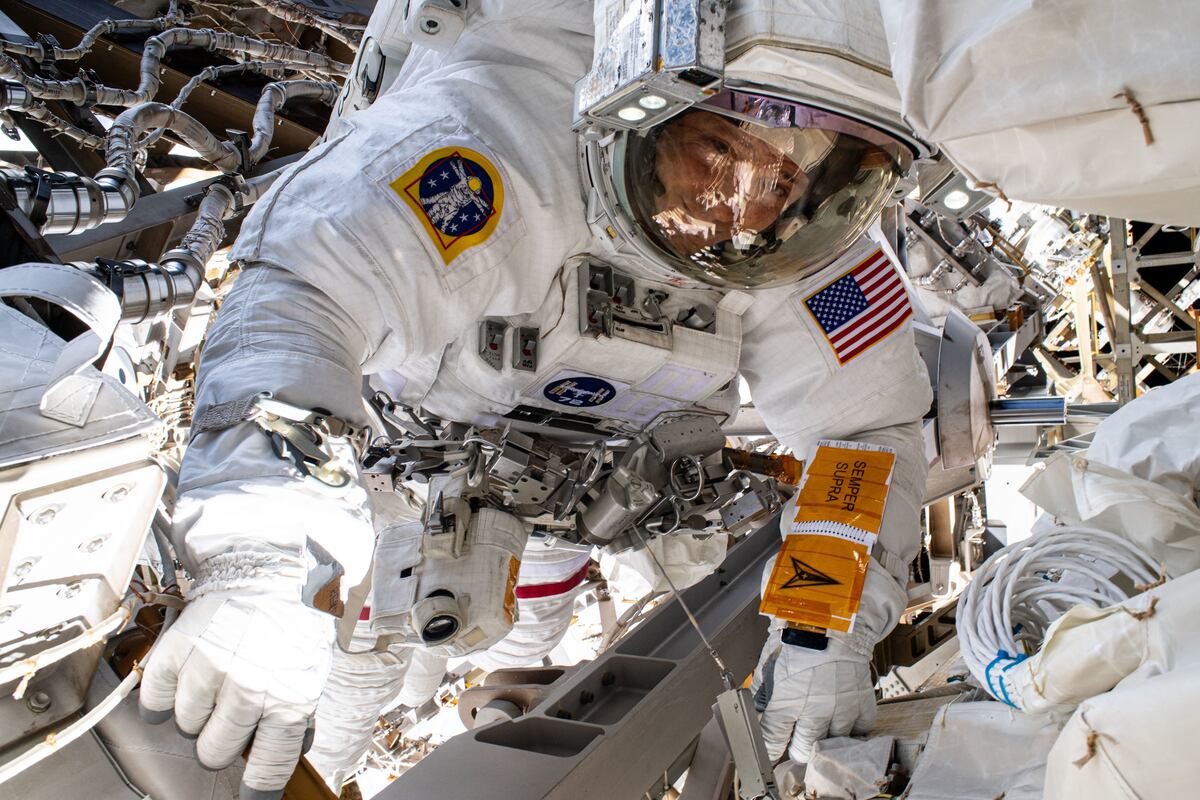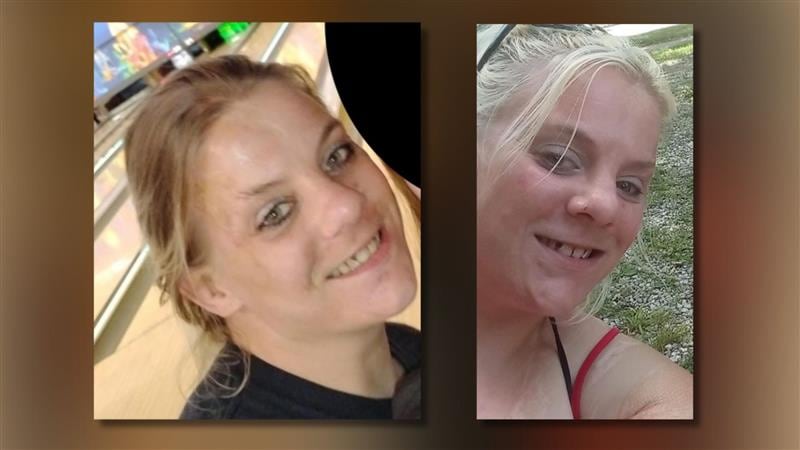Kansas native returns to Earth as first cosmic Guardian after extended celestial stay
ARLINGTON, Va. (KCTV) - A Kansas native is back on U.S. soil as the first cosmic Space Force Guardian after an extended stay on the International Space Station alongside the other of Crew 9.
U.S. Space Force announced on Wednesday, March 19, that Colonel Nick Hague returned to Earth following a 6-month mission on the International Space Station on Tuesday. He launched aboard the SpaceX Dragon on Sept. 28 as part of NASA’s SpaceX Crew-9 alongside Suni Williams, Butch Wilmore and Aleksandr Gorbunov.
The U.S. Air Force noted that Hague’s flight marked a critical moment in Space Force history as he became the first active-duty Guardian to fly into space. He was also one of the first humans to launch from Space Launch Complex 40 at Cape Canaveral Space Force Station in Florida.
NASA noted that Hague, a Belleville, Kansas native, was chosen as an astronaut in 2013 after he earned degrees from the U.S. Air Force Academy and the Massachusetts Institute of Technology. The Hoxie High School graduate’s first mission to the ISS was in 2018 with multiple launches since then.
“I never would have imagined that I was going to be the first Guardian to launch into space. I represent all those Guardians that are around the globe,” Col. Hague said. “I represent that entire family that brings so much to the table that lets us explore space and it’s a thrill to be a part of that.”
During the Colonel’s mission, military officials said Hague took several significant items to space, including the official sheet music for the Space Force song “Sempura Supra,” to serve as a symbol of the branch’s commitment. He also brought patches and personal mementos to honor those who contributed to the operations.
“As the first member of the Space Force to launch into orbit, he embodies our Guardian Spirit,” said Chief of Space Operations Gen. Chance Saltzman. “His dedication to scientific discovery is remarkable, his effort to inspire the next generation of space pioneers is commendable, and his commitment to serving our nation is unwavering. We’re incredibly proud.”
According to Space Force, a key part of Hague’s mission was his participation in more than 150 experiments to advance spaceflight and improve life on Earth. His research included blood clotting studies, microgravity plant growth and vision changes in astronauts to improve medical treatments, enhance food sustainability in space and provide insight into how extended exposure to microgravity affects the human body.
“The experiments we are conducting on ISS are pushing the boundaries of science and solving real-world problems. Whether it’s finding new treatments for diseases, discovering new material properties, learning to grow food more efficiently, or ensuring the health of future space explorers, the ongoing research aboard the space station can and has improved life for everyone back on Earth,” Hague said.





Military leaders noted that Hague also participated in physical fitness activities to emphasize the importance of health during long-term missions. He took part in the Space Force T-Minus 10 Miler virtually on a treill and finished in about an hour and a half - the same time it takes for the lab to orbit Earth once.
“I enjoyed virtually ing everyone at Patrick Space Force Base, Fla., for the T-10 Miler to kick off a week highlighting the 5th birthday of the Space Force. My race time comes with an asterisk if you consider the microgravity working in my favor! But like life, it’s not about the time, but the distance covered and the perspective gained along the way,” Hague said.
On Jan. 16, Space Force said Hague conducted a 6-hour spacewalk alongside an Expedition 72 crewmate as they replaced a station component and serviced an external research instrument.
Throughout his mission, military officials indicated that Hague connected with students across the globe and answered questions about food production in space and the possibility of future missions.
“Being able to engage with students and showcase the cutting-edge research taking place on the space station is vital. In doing so, we underscore the opportunities a STEM education creates and the critical role STEM education plays in driving future innovation. We have to inspire the next generation of explorers, both for space and here on Earth, and let them see it is possible to turn their dreams into reality,” Hague said.
According to the military, Hague was initially scheduled to return to Earth in early March, however, adjustments in the Crew-10 mission timeline caused a delay. He and his Crew-9 colleagues remained aboard the space station and continued their research to the station’s operations.
NASA noted that astronaut Major Nichole Ayers, U.S. Air Force officer and F-22 Raptor pilot, arrived at the station on Sunday, March 16, as part of the Crew-10 mission. She took over operations and continued research and experiments started by Hague and his crew.
Before the launch, Ayers said she could not wait to high-five the Colonel when she climbed aboard.
“Getting to work with such an amazing human has been wonderful. In fact, there will be representatives from each of the service academies while we are there! Suni Williams is a Naval Academy Grad and Anne McClain (our Crew-10 commander) went to West Point. What a cool representation of our service academies and the opportunities we all have through our different services,” Ayers said.
Space Force indicated that Hague and his crewmates returned aboard the Dragon off the coast of Florida just before 6 p.m. on Tuesday. After that, recovery teams began medical evaluations and post-mission debriefings.
“Welcome home, Nick, and congratulations on your second return from the ISS,” Saltzman said. “We’re all excited to have you back, and we’re ready to leverage your experiences and expertise in the Space Force.”
As part of standard post-flight procedures, the military noted that Hague will undergo physical rehabilitation to adjust to Earth’s gravity and participate in briefings to share insights from his mission. He has now logged more than 350 days in space and provided valuable data to prepare for future missions beyond Earth’s orbit.
Copyright 2025 KCTV. All rights reserved.













